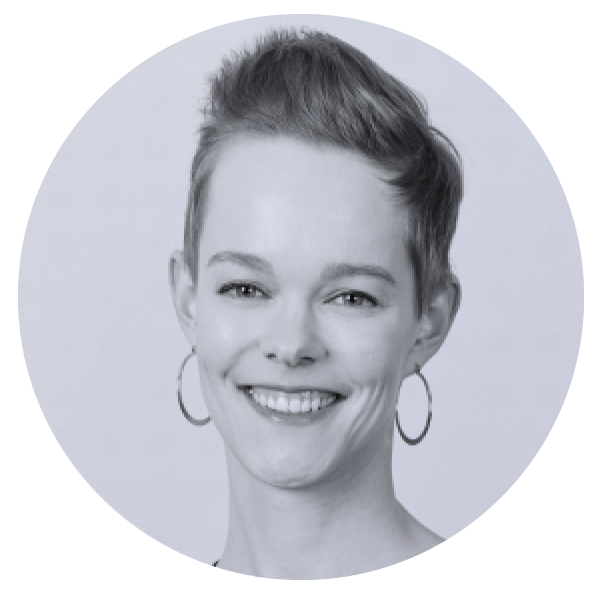
As businesses mature and grow, they need to create new roles and hire people to fill them. In many small to medium-sized organisations, this can happen organically in response to internal changes, like a person resigning, or external ones such as an increase (or drop) in demand for goods or services, or because there’s been an injection of capital.
Regardless of the drivers, simply reacting won’t always deliver the best results. It’s much better to take the time to analyse and tactically design the structure of your organisation so you have a clear notion of what needs to be done and the roles and skills you need to do that work. It’s about making sure you get the right people in the right places at the right time.
This is what is called organisation design or organisational design (or ‘org design’ for short).
Organisational design is the process of defining the structure of your organisation in terms of the roles or jobs within it and the responsibilities those roles have. It’s all about ensuring the design of your organisation is aligned with your objectives and strategy, so you can make good decisions that enable you to effectively and efficiently achieve them.
Deloitte's research has found that effective org design improves decision-making and innovation, optimises costs, accelerates business growth, and boosts employee satisfaction.
This blog post looks at the fundamentals of org design, how you can get it right and what can happen if you don’t. It’s sprinkled with the expertise of MyHR’s team, who have worked in companies around the world, and MyHR’s own experience in growing from a start-up business with 1 employee to a scale-up with over 60.
Why organisation design matters
As mentioned, org design happens whether or not you put conscious effort into it. Any business is a collection of people performing tasks to achieve outcomes, regardless of whether you do anything to actively organise:
- The way the work is done.
- How roles fit together.
- How decisions are made and communicated.
- What the lines of reporting are.
Organisation design is often thought of as only being the domain of large corporations, with traditional org charts made up of boxes and hierarchies, but no organisation is too small to benefit from actively thinking about and designing their structure and the way individual roles contribute to delivering on your goals and priorities.
The overall design of your organisation doesn’t have to be complicated, but it should be considered and purposeful. Leaving it to chance won’t maximise your chances of making good decisions and at MyHR, we are firm believers in taking a proactive approach to org design. We learned this ourselves in developing our business, and we see it all the time in businesses of all sizes and at all stages.
Principles of effective organisation design
There’s a simple formula we use to approach effective org design. It flows from the top down, like this:
- Start with your strategy - what is your business and what do you want to be? This overarching plan and purpose then defines:
- What work needs to be done to achieve these goals? Once you determine what the work is and how it is performed, that then defines:
- The specific roles and responsibilities and how they fit together in the organisation.
Often, organisations approach their design in the reverse order: letting the existing roles and resources define the structure, or hiring new people or restructuring without defining the overall goals and outcomes, and hoping the new roles fit into the business and deliver on the strategy.
Design planning does take time and energy, but the effort (working on your business rather than in it) will pay dividends in the long run.
Also keep in mind that your org design shouldn't be written in concrete, but should be flexible enough so you can meet any challenges or opportunities that crop up. Review it annually or at key junctures, so it stays current.
However, you need to strike a balance, as making frequent changes to the design of your organisation is damaging to your people, the culture, and your overall business performance.
Key elements of organisation design
Organisation design requires more than Post-it notes on a wall. Effective organisation design outlines not only your business’ structure, but the roles and responsibilities, processes and workflows (the way roles fit together), governance, and the company’s culture or ways of working.
In considering your org design, define the following:
1. Structure
- How teams, departments, and reporting lines are arranged.
- Examples: hierarchical, flat, matrix, networked.
2. Roles and responsibilities
- Clear definition of what each role contributes.
- Ensures there are no gaps or overlaps in accountability.
3. Processes and workflows
- How tasks flow across teams.
- Includes decision-making frameworks and approval processes.
4. Governance and authority
- Who has the power to make which decisions.
- Helps balance efficiency with oversight.
5. Culture and ways of working
- Encouraging collaboration, innovation, or agility depending on the organisation’s goals.
- Ensures the “soft” elements (values, behaviours) match the “hard” structures.
Working examples of organisation design
#1: The fast-growing business
Let’s look at an enterprise that’s in a growth phase, because of increasing demand or investment. You need to be clear on what your company will look like as it grows, e.g. from 10 employees to 20, then 50 to 100, and on upwards.
Along the way, you will go from being a flat structure with all the employees reporting to the business owner to a structure with managers looking after staff and reporting lines. Many roles, at this point, are outside the visibility of the owner (or CEO).
The organisation may also be expanding into new markets or territories and there will typically be a lot of moving parts, with things changing quickly, and more work to do than the team can reasonably do.
Effective org design will ensure the hierarchies and responsibilities within the company are clear so managers and employees know where to focus their efforts, how and why, and that nothing is being overlooked or effort is being duplicated. You don’t want to hastily hire a bunch of new people and then hope they know what to do to achieve the required outcomes.
But you also need to be prepared to adapt and learn as you grow. Seeking advice from mentors or other business leaders who have experience in fast-growing companies can provide invaluable insight.
#2: The small business
Not every organisation strives to be bigger, but in smaller, or mature, stable businesses that are happy with their size and position (or are in the not-for-profit sector), the sort of organisation you are and want to be should still define the way you structure yourself to achieve the outcomes you need to succeed and reach your objectives.
People are often performing multiple roles in a small enterprise, so being clear about your org design means efforts are optimised, and people know the mission and how they fit and contribute. It also means you can be creative and nimble in how you approach your structure, e.g. by balancing employees with contractors, volunteers, or outsourced labour, systems or suppliers.
Another benefit of having clear aspirations and expectations is that your business will be a better, more attractive place to work. This helps when you need to hire new blood and it also flows into greater employee satisfaction, motivation, and less staff turnover.
#3: The downsizing business
Good organisational design is also crucial in periods of change or when you are restructuring, i.e. you are looking at shedding roles rather than adding them.
The success of your new design will determine the future success of the company, and the new structure forms the basis of the restructuring proposal and process, which needs to be handled smoothly and lawfully, so you get the best outcomes with the least risk.
Learn more about the process for making changes to your business structure.
The pitfalls of piecemeal org design
At MyHR, we know the risks of not being strategic in your organisational design and letting the roles define the work and your structure. We have been through it ourselves.
When the business was small, we were so busy managing day-to-day tasks that we didn’t take a step back and think critically about the way the company was structured. Business was booming but it got to a point where we had to be smarter about aligning the design of the organisation (and the teams and roles within it) with our strategy or we risked becoming scattered or directionless.
Luckily, we didn’t need to unpick a poor structure, but that can happen and it’ll set your organisation back because structure can be a complicated thing to undo once it’s embedded, or the roles aren’t aligned with what you need, or you have people in jobs that don’t match their skills.
You may need the help of experts and consultants to help you realign your roles and the people performing them, which aside from costing money, can take up a lot of time and effort.
Hiring mistakes are also costly, especially if you are in the market for skilled workers. You don’t want to start recruiting without a clear understanding of the way the role fits into achieving your aims and what skills, experience, and aptitudes a person needs to do it well.
You risk finding the person you hire can’t deliver what you require, which means more training and development (and possibly performance management), or you let them go and you’re back repeating the whole recruitment process.
Also, to maximise the chances of a new hire succeeding, they need to clearly understand the organisation’s goals and expectations, and how their job contributes to building its success.




